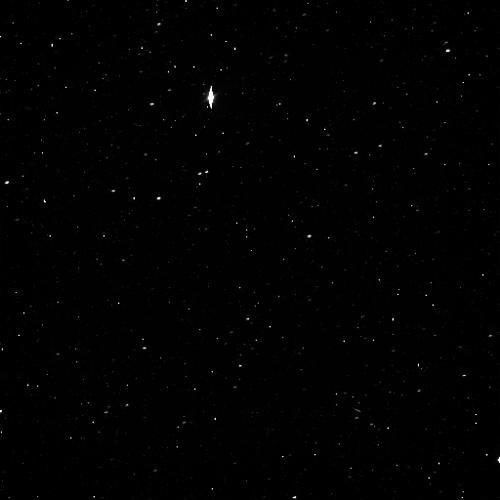Skathi
Contents

Discovery
Skathi was discovered on Sept. 23, 2000, by Brett J. Gladman, John J. Kavelaars, Jean-Marc Petit, Hans Scholl, Matthew J. Holman, Brian G. Marsden, Phillip D. Nicholson, and Joseph A. Burns using the 3.6-m Canada-France-Hawaii reflector on Mauna Kea, Hawaii, with adaptive optics. They discovered seven other Saturnian moons at the same time: Tarvos, Ijiraq, Thrymr, Siarnaq, Mundilfari, Erriapus, and Suttungr.
Overview
Skathi (formerly called Skadi) has a mean radius of 2.5 miles (4 kilometers), assuming an albedo (a measure of how reflective the surface is) of 0.06. It orbits Saturn at an inclination of about 151 degrees and an eccentricity of about 0.3. At a mean distance of 9.7 million miles (15.6 million kilometers) from Saturn, the moon takes about 728 Earth days to complete one orbit.
Skathi is a member of the Norse group of moons. These "irregular" moons have retrograde orbits around Saturn — traveling around in the opposite direction from the planet's rotation. Skathi and the other Norse moons also have eccentric orbits, meaning they are more elongated than circular.
Like Saturn's other irregular moons, Skathi is thought to be an object that was captured by Saturn's gravity, rather than having accreted from the dusty disk that surrounded the newly formed planet as the regular moons are thought to have done. Skathi appears to be a member of a subgroup that also includes Skoll, Hyrrokkin, S/2006 S1, Bergelmir, Farbauti, S/2006 S3, and Kari.
Skathi, and another member of the Norse group, Ymir, may be the sources of material that coats the dark side of Iapetus and, to a lesser extent, the surface of Hyperion.
How Skathi Got Its Name
Originally called S/2000 S8, Skathi was named for Skadi, a giantess in Norse mythology. Skadi donned armor and traveled to Asgard, home of the Norse gods, to avenge her father's death at their hands. However, she settled for an agreement that she could pick a husband from their ranks by inspecting only their feet, and that the gods would make her laugh. The latter was accomplished when Loki engaged in a tug of war with a goat, using a cord tied to the goat's beard and to a particularly sensitive part of Loki's anatomy.
Originally the name was spelled Skadi, but in 2005 International Astronomical Union changed the spelling to Skathi. The two versions are alternate transliterations of the Norse word, Skadi, with the letter D (eth).






























